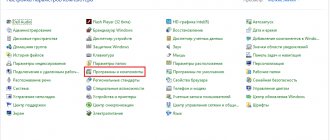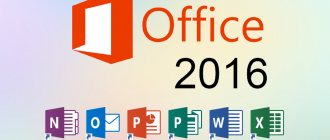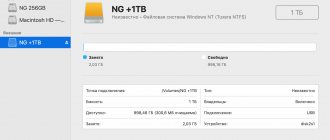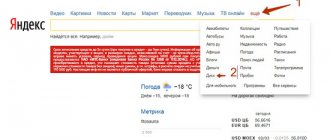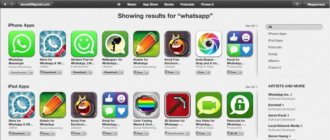iTunes is software or a “smart” media player with advanced functions, designed specifically for Apple gadgets, including the iPhone. Its main functions are synchronizing the device with a computer, access to filling it with various content (music, games, movies, books), backup data storage, as well as purchasing and downloading branded applications. iTunes also has the added benefit of allowing you to make purchases from the AppStore through your computer.
How to connect iPhone to iTunes?
To synchronize your iPhone with your PC, first you need to go to the official Apple website, download the media player to your computer and log in by entering the data received when registering your Apple ID.
Note! Using the advanced features of iTunes, you can manage the contents of your phone, as well as transfer data from your computer to your iPhone and vice versa. Without connecting the program, you won’t be able to transfer the necessary files (photos, music, etc.) from your computer to your smartphone, so to create a media library, you must download and install iTunes.
After this, follow the instructions:
- open the program;
- using a USB cable, connect the phone to the PC (the device icon should appear in the upper left corner of the program);
- click on the icon. On the left, in the “Settings” menu, a list of media library files that are synchronized with your phone will appear;
- select the files you need to synchronize (click on the iPhone icon in iTunes and select the “Sync” option).
Since the media library is initially empty, to fill it you need to select the files of interest (for example, photos or music) and add them to the database by moving them to the window that opens. Method number 2 - in the menu, select “File” → “Add file/folder”.
iTunes - what is this program? Installing and Using iTunes
Many of us have heard of iTunes. What is this program and what is it for? This is the brainchild of Apple. And for what purpose it is used, we will analyze in this article.
Background
The year of birth of iTunes is considered to be 2003, two years after Apple released the legendary iPod with a fantastic memory capacity at that time - as much as 5 GB. There was one problem that did not make Steve Jobs happy.
iPod owners intensively downloaded content from pirated sites in order to fill their players with it. Jobs, an ardent opponent of piracy, categorically did not like this approach.
And in 2003, he created his own online media content store, where users could buy the compositions they liked.
This shows Apple's ideology: as much profit as possible at any cost. Of course, Jobs' strategy works great in “respectable” countries, such as the USA. There, downloading pirated content can land you in jail, and there are plenty of such cases.
But as for Russia, Apple failed. Russians have used pirated content and will continue to use it. The lack of working laws in the field of pirated music or films, as well as the high cost of legal content, take their toll.
Few people pay for something they can get for free.
The Evolution of iTunes
Much water has passed under the bridge since then. iTunes has changed a lot. From a service for purchasing songs, it has grown into a full-fledged online store with the ability to purchase applications, films, books and music. A separate iTunes program has also appeared.
What is this program? It is a multimedia player that can play almost all music and video files. The player is the standard default player on MacOS systems installed on Apple computers. Everything would be much simpler if iTunes was just a player, but no.
This is a symbiosis of the Apple online store and a multimedia player. That is, the user can make purchases without leaving the checkout.
That's what iTunes is. Assemblies for Windows OS are also available for the computer. They are easy to find on the official Apple website. This can be considered an achievement, since Apple is not particularly willing to share its developments with competitors. True, iTunes for Windows has not found much popularity. And there are reasons for this, but more on that later.
iTunes and AppStore
When Jobs faced the question of selling applications online, he had to reconsider the functions of iTunes. After all, the service was initially positioned as a media portal. Selling apps through it would be ugly. Apple specialists did not have to rack their brains for long, and soon they introduced the AppStore - an analogue of iTunes, but with the ability to purchase only applications and games for MacOS.
Windows users can also install iTunes in conjunction with the AppStore, although it is not entirely clear why this should be done. Applications for MacOS cannot be installed on Microsoft's OS. It is possible that Apple wants to attract more people to its ranks.
iTunes on mobile platforms
With the release of the first iPhone, Apple faced the question of releasing a mobile version of iTunes. The launch was carried out in the shortest possible time. It must be said that this is now the most popular program for iPhones.
iTunes is the prototype of the well-known Android Market. Therefore, one should not be surprised at its popularity among users of Apple smartphones. You can't do almost anything without iTunes on your smartphone.
Installing applications, synchronizing data, running the AppStore - all this is iTunes.
After an update to iOS (the iPhone mobile platform) was released, old versions of iTunes refuse to work on devices running the previous OS version. For example, problems are observed on the iPhone 4S.
If you can't sign into your account, then iTunes for iPhone 4S needs to be updated.
Moreover, updating it simply won’t work: you’ll have to download the installation file from the Apple server and install it manually.
iTunes is also available on Apple tablet computers. The specialists of this company tried to make all their equipment dependent on the online store, and they succeeded very well. Now users of Apple devices are required to pay for almost everything.
Even updating the operating system can cost a pretty penny, not to mention third-party applications. Unlike the same Android Market, free applications in iTunes and the AppStore - one or two miscalculation. Now the life of a modern Apple user is unthinkable without iTunes.
What kind of program is this that siphons money out of the user?
iTunes player
However, we digress. There is also an iTunes player for Mac and Windows OS. What is he like? This is a multimedia processor capable of burning discs and playing music files.
Unfortunately, iTunes eats up too much RAM, which is especially noticeable on laptops. If on MacOS with its ideal optimization this attracts attention, then Windows begins to slow down terribly.
In addition, the player does not reproduce all sound formats. For example, it cannot read lossless formats such as APE (Monkey's Audio) and FLAC (Free Lossless Audio Codec), which even regular Winamp can handle. From lossless, it can only pull ALAC.
And that’s only because it’s a proprietary Apple format. Like all players, it supports equalizer settings and even has a number of presets. But when playing music on Windows, the sound is ugly.
It is possible that the player libraries do not contain a script for correct operation of Windows sound drivers.
Transfer contacts to your computer using iTunes
Using the program, you can synchronize any information, including contacts. If you added new contacts to your iPhone, all data will appear on your computer during synchronization. To transfer information:
- Open the program
- Connect your phone to your PC.
- Select “Information” in “Settings”.
- In the “Synchronize contacts” item that appears, select the appropriate option (Windows Contacts, Outlook).
- Confirm with the “Apply” button.
How to backup iPhone?
- launch iTunes and connect your phone using USB;
- select your iPhone, click “Back up now” and the program starts the backup process.
Once the process is complete, be sure to check whether the backup was successful. To do this, check the “Last copies” log - the time and date (today) of the last saved copy.
Note! The backup copy is saved on the hard drive of your computer (Mac or Windows).
How to use iTunes - step by step instructions
Using the following instructions, you will learn how to download various content to Apple smartphones and tablets, create backup copies, and update software. Let's start with the music files.
Uploading music
You can download music to your iPhone from a variety of sources - these can be tracks from the iTunes Store or music files from your hard drive.
In order to start downloading, you need to connect the device to the computer and wait until iTunes sees the connected gadget. We carry out the initial setup of the program.
To do this, go to the “Browse” tab and check the “Sync only selected songs and videos” and “Process music and videos manually” checkboxes there.
How to reset all iPhone settings via iTunes?
If your iPhone often freezes or you just decide to sell it, using iTunes you can quickly and easily delete all data and restore factory settings.
Note! When you restore iOS software on iPhone, all data and settings are deleted! Make sure you have backed up before performing a reset!
To reset settings:
- Open iTunes on your computer.
- Connect your phone using USB.
- Select “iPhone” when it appears in the program.
- In the “Settings” section, click “Browse” → “Restore”.
- Confirm the reset again by clicking “Restore” in the window that appears.
- After confirmation using iTunes, all phone settings are reset and the latest version of iOS is installed.
- After recovery, the phone restarts.
Where can I download iTunes?
The Apple media player is downloaded from the official website (and nothing else - you shouldn’t even consider third-party sources, otherwise problems will appear out of nowhere!) in two versions - 32 and 64 bits (more on which version to choose - see the paragraph below!).
Immediately after saving the distribution in the location you like, you can safely start the installation, preferably with administrator rights and in the directory suggested by the system (that is, on drive C, without changing anything, and without offering a new place to unpack files and documents). If you proceed as described above, then most likely the installation will go quickly, and iTunes will work as it should - without any errors, crashes or crashes.
By the way, recently, owners of computers with Windows 10 can download the Apple media player directly from the Microsoft Store digital store. This method has several advantages. Firstly, you don’t have to worry about updates - all important changes are made on the fly automatically without any user interaction.
And secondly, you don’t have to understand the available versions (32 or 64-bit) and choose any settings there. Again, just repeat the algorithm of actions described below and you can safely start interacting with iTunes:
- The first step is to open the Start menu and enter the search term Microsoft Store in the text field that appears. Click on the shortcut that appears and wait for the digital store to fully load;
- Use the search again, but this time enter the query iTunes;
- Open the page with the media player, click “Get”, and then “Download”. Wait for the unpacking and installation operations to complete, open iTunes, log in using your Apple ID account.
Connecting iPhone to iTunes and other services in the service
If iTunes does not see your iPhone, you cannot synchronize your phone with the program, you are having difficulty transferring contacts or other difficulties, contact service. Our specialists will promptly help you in any situation, and, if necessary, will diagnose your phone free of charge and fix all problems. We are waiting for you in our branches located near Moscow metro stations. For more details, please contact us by phone or request a call. We provide courier delivery within the Moscow Ring Road.
Bagrationovskaya Arbatskaya
iTunes U review – online textbooks and courses from leading universities in the world
iTunes U is a huge collection of free educational courses from the most famous universities and colleges in the world.
If the words Cambridge, Oxford, Stanford and Yale are not an empty phrase for you, then this application is for you. In total, iTunes U has 14 scientific areas. Here you can find all kinds of theoretical and practical courses in the humanities and technical sciences: history, algebra, anatomy, literature, programming, law, management, design, journalism, astronomy and even esotericism.
In this situation, the most difficult thing is choice. After downloading the course he likes, the user can: listen to lectures, watch videos, complete practical exercises and subscribe to updates. The main requirement: to be the owner of a computer, tablet or smartphone from Apple.
One device - and all the knowledge of the world is at your feet.
- Review – course announcement and preface from the author.
- Lecturer – summary information about the teacher who provided this course.
- Structure – course content (sorry inactive).
At the bottom of the screen there is another menu : properties, publications, notes, materials. We have already familiarized ourselves with the “properties” section.
- Publications are a kind of guide for students. Here is a list of materials for each topic, as well as homework for each part of the course. From this point of view, the English courses are better prepared, but our teachers can be forgiven for some lack of awareness - this is their first experience of working in the system.
- Notes are divided into three categories: Course Notes, Video Notes, and Book Notes. The first ones that are relevant when there are comments and remarks about the entire course. The second category makes it easier to work with video files and audio recordings. The latter is a complete copy of the similar menu in iBooks.
- Materials – a collection of all information from the course: lectures, audio, video and bookmarks. The section is convenient for quickly surfing media files.
It is worth noting that the courses are more focused on listening to lectures and video tutorials. Text files are provided in PDF . If necessary, you can save your favorite materials in iBooks, export to any other format, or share the file with friends.
and audio files are played in a separate window. What’s remarkable is that notes can be added while watching videos.
Say a word about iTunes Course Manager
Previously, iTunes U had only one drawback - the lack of Russian language. It is still present - without knowledge of the English language, the user will not be able to understand the features of English literature of the last century. The good news is that Russian teachers have gained access to iTunes Course Manager and in the near future our compatriots will be able to receive precious nuggets of knowledge from Russian teachers. Semyon Semenovich Gershtein’s course “Field Theory” became a kind of pioneer in this field.
Initially, it was believed that iTunes U was a program for students of Higher Education Institutions. But Anna Razdorskaya, a primary school teacher at school No. 1413, refuted this myth - she plans to release a course for her students in the near future and is happy to share her experience with colleagues. Anna is confident that our teachers will quickly master Western technology:
...you know how to type text in an editor, create simple presentations and use a voice recorder - then you won’t have any problems with the Course Manager.
The system is truly intuitive and easy to use. All that remains for teachers is to summarize the material accumulated over the years and integrate it into unique educational courses. Apple has been testing the waters on the Russian educational front for several years now. Many teachers have already mastered the iBooks Author application and send out teaching aids in a form convenient for modern students. The company's official website contains detailed instructions on how to master the features of working with iTunes U.
Benefits of iTunes U for Teachers and Students
Translation of lectures, tests, textbooks, assignments, audio and video materials into electronic format. This is a routine job that will have to be done once, but then the teacher himself will understand the benefits of his action. Exporting materials in various formats expands educational opportunities to unprecedented heights. Compactness and reliability of data storage will also play a role - now you can forget about lost pieces of paper and dusty notebooks. iTunes U also provides the necessary controls over the activities of wards.
